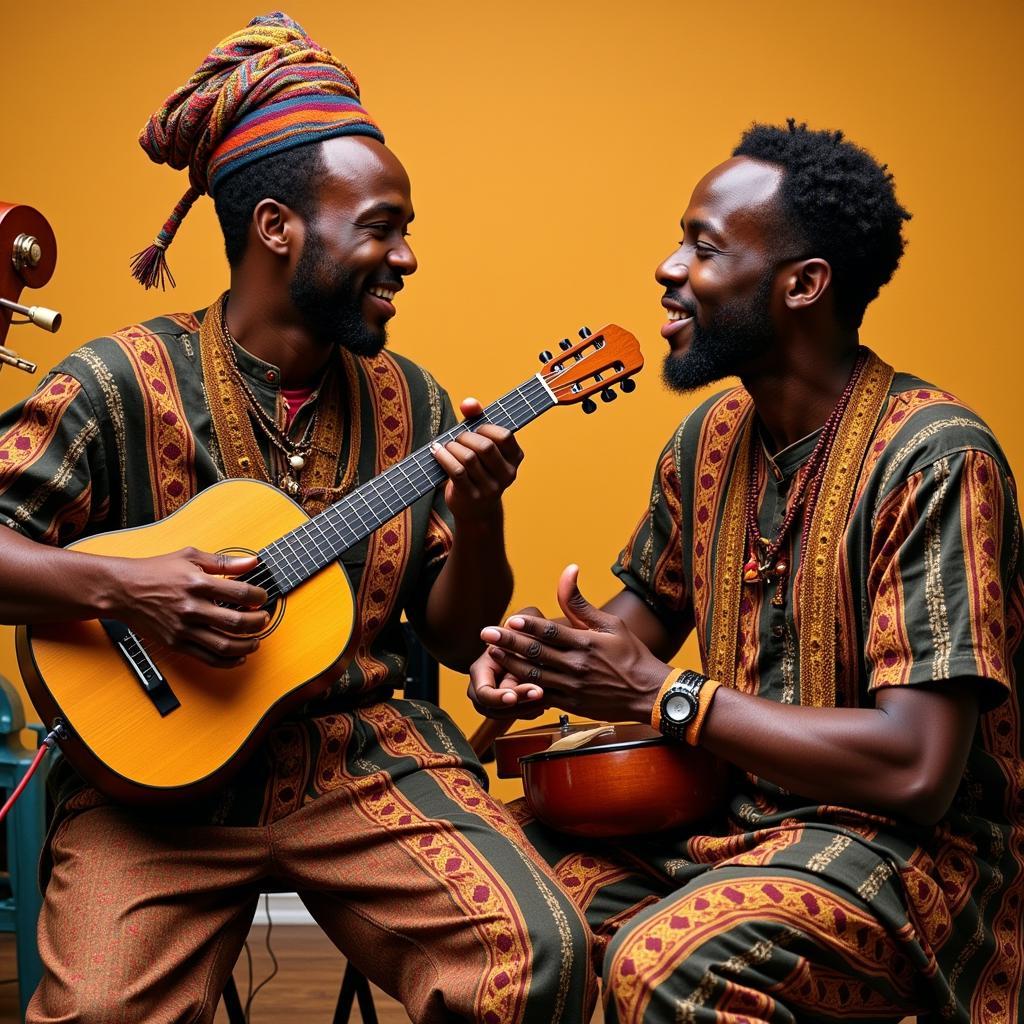Discovering the Magic of African Indigo Fabric
African Indigo Fabric has captivated the world for centuries with its rich hues and intricate designs. From ancient dyeing traditions to contemporary fashion, this vibrant textile tells a story of cultural heritage and artistic expression. Dive into the fascinating world of African indigo and discover its unique beauty.
The allure of African indigo lies not only in its striking visual appeal but also in its profound cultural significance. For generations, indigo dyeing has been more than just a craft; it’s a powerful symbol of identity, status, and spirituality across diverse African communities. This article explores the history, techniques, and contemporary uses of this remarkable textile. Check out some inspiring African cloth designs.
A Journey Through the History of African Indigo
Indigo dyeing in Africa has a rich history, dating back centuries. Evidence suggests that various indigenous communities independently discovered the secrets of extracting the deep blue dye from the indigo plant. From the Yoruba of Nigeria to the Tuareg of the Sahara, indigo has played a vital role in textile traditions. Each region developed its own unique dyeing methods and patterns, reflecting their distinct cultural identities.
Ancient Techniques and Modern Adaptations
Traditional indigo dyeing is a labor-intensive process, often involving multiple stages of fermentation and oxidation. Artisans carefully prepare the indigo dye bath using natural ingredients and time-honored techniques passed down through generations. The process often involves intricate resist dyeing methods, such as tie-dye, batik, and adire, to create stunning patterns on the fabric. While modern techniques have emerged, many artisans continue to embrace traditional methods, preserving the authenticity and cultural significance of African indigo.
The Cultural Significance of African Indigo
African indigo fabric is much more than just a beautiful textile; it holds deep cultural significance for many communities across the continent. In some cultures, indigo-dyed garments are worn during ceremonies and rituals, symbolizing spirituality and connection to ancestors. The color blue itself often holds symbolic meaning, representing purity, peace, or even power. In other societies, the intricate patterns created through resist dyeing techniques convey specific messages or stories.
Indigo as a Symbol of Status and Identity
In some African communities, indigo-dyed clothing was historically associated with royalty and high status. The elaborate designs and labor-intensive dyeing process made these garments a symbol of wealth and prestige. Even today, African indigo continues to be a powerful symbol of cultural identity, connecting individuals to their heritage and traditions. Looking for African handbags made with this beautiful fabric?
“Indigo is more than just a color; it’s a thread that connects us to our ancestors and our cultural heritage,” says Abeni Adebayo, a renowned textile artist from Nigeria.
African Indigo in the Modern World
African indigo fabric has seen a resurgence in popularity in recent years, both within Africa and globally. Designers and fashion enthusiasts are drawn to its vibrant color and unique patterns, incorporating it into contemporary clothing, accessories, and home décor. This renewed interest has not only helped to preserve traditional dyeing techniques but also provided economic opportunities for artisans and communities. Explore the world of African material.
From Traditional Garments to Contemporary Designs
While traditional garments and textiles continue to be cherished, African indigo is also finding its way into modern fashion. From runway shows to everyday wear, this versatile fabric is being used to create stunning pieces that blend traditional craftsmanship with contemporary aesthetics. This fusion of old and new is breathing new life into the art of indigo dyeing, ensuring its continued relevance for generations to come. Discover the fascinating world of African garment names.
“The beauty of African indigo lies in its ability to transcend time and trends,” notes Kofi Asante, a Ghanaian fashion designer. “It’s a timeless textile that can be reinterpreted and reimagined in countless ways.”
In conclusion, African indigo fabric remains a powerful symbol of cultural heritage and artistic expression. From its ancient origins to its contemporary applications, this vibrant textile continues to captivate the world with its rich history and unique beauty. Whether you’re drawn to its traditional significance or its modern appeal, African indigo offers a glimpse into the vibrant tapestry of African culture. Discover the elegance of African ladies with turbans.
FAQ
-
What is African indigo fabric?
African indigo fabric is a textile dyed with indigo, a natural dye derived from plants. -
What is the significance of indigo in African culture?
Indigo symbolizes status, spirituality, and cultural identity in many African communities. -
How is African indigo fabric made?
It’s made through a process of dyeing fabric with indigo, often using resist techniques. -
What are some common uses of African indigo fabric?
Clothing, accessories, home décor, and ceremonial garments. -
Where can I buy authentic African indigo fabric?
From reputable vendors specializing in African textiles, both online and in physical stores. -
How do I care for African indigo fabric?
Hand wash or machine wash on a gentle cycle with cold water and mild detergent. -
Is African indigo fabric sustainable?
Traditional indigo dyeing is a natural and sustainable process.
When you need assistance, please contact us at Phone Number: +255768904061, Email: kaka.mag@gmail.com Or visit us at: Mbarali DC Mawindi, Kangaga, Tanzania. We have a 24/7 customer service team.

